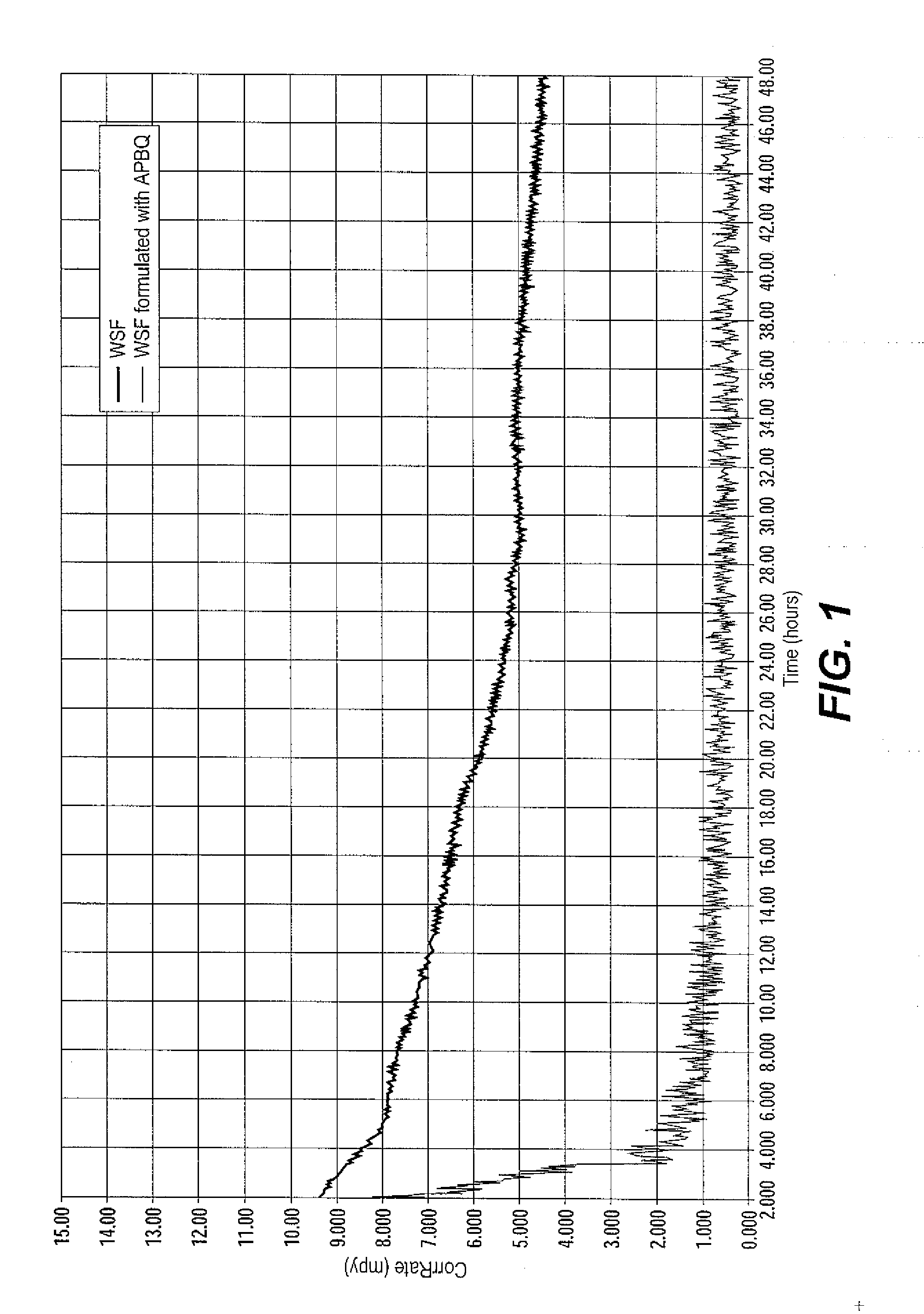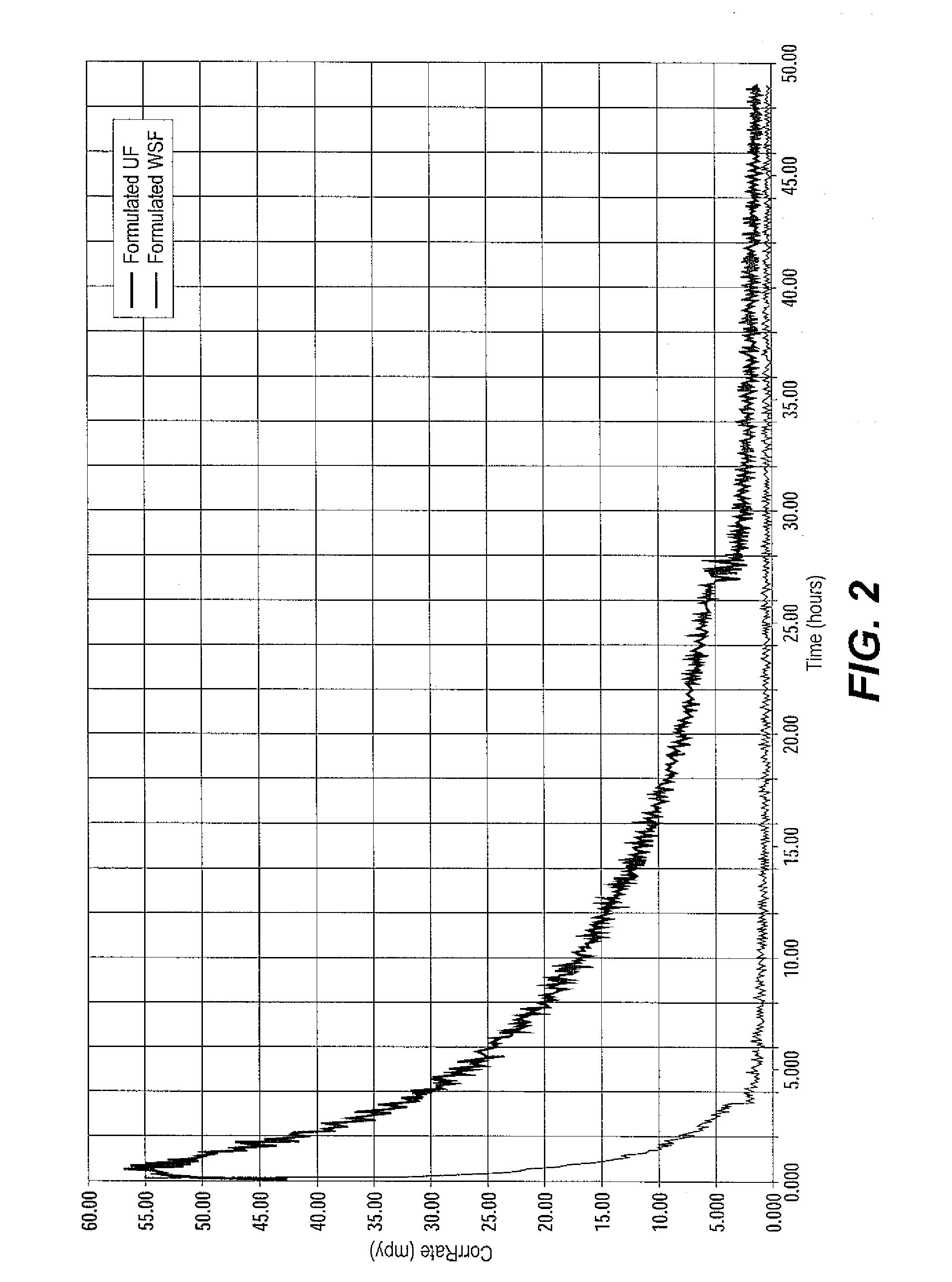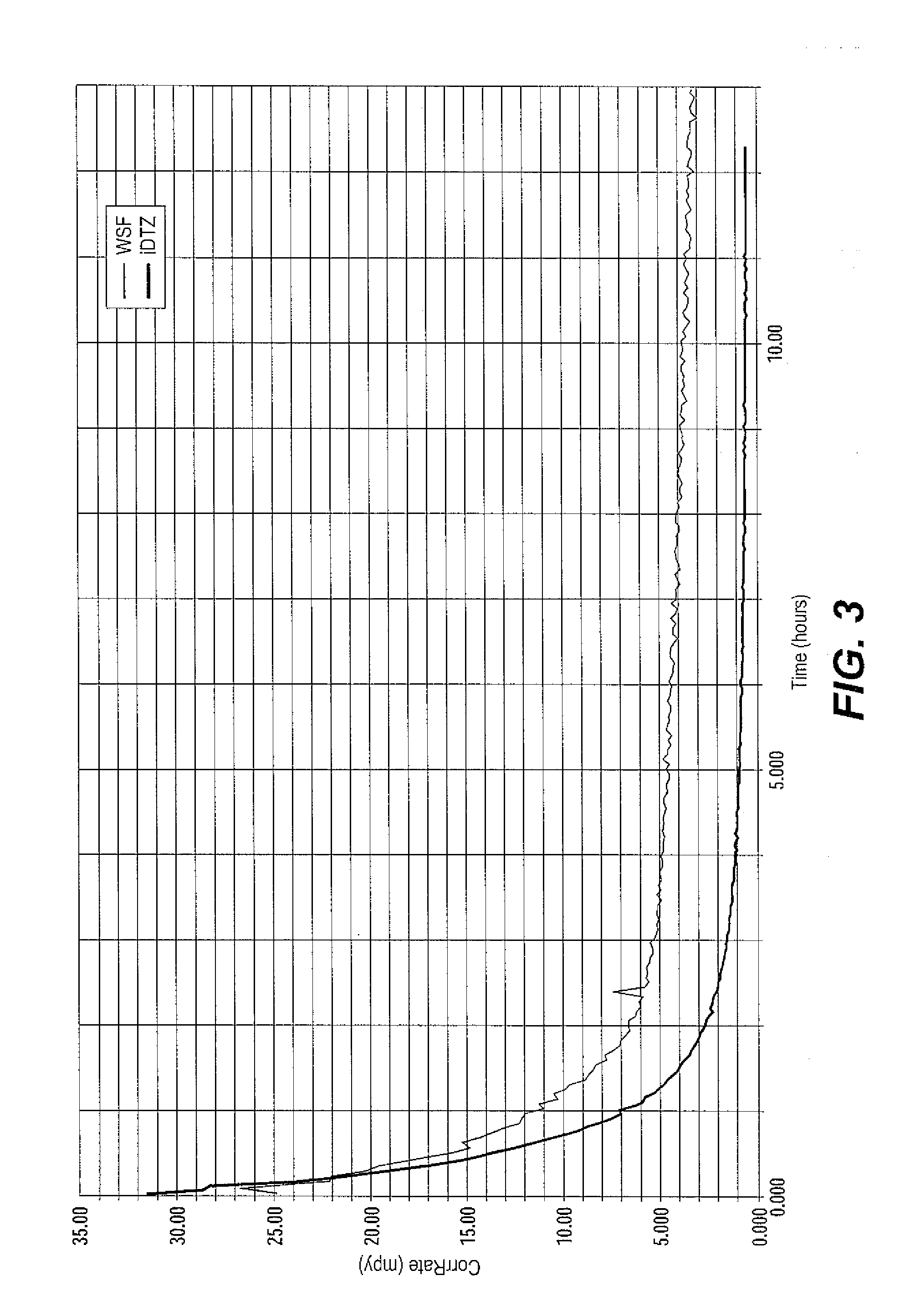Method of Using Dithiazines and Derivatives Thereof in the Treatment of Wells
a technology of dithiazines and derivatives, which is applied in the direction of sealing/packing, organic chemistry, and well accessories, etc., can solve the problems of increasing the corrosion tendency of metallic surfaces, localized corrosion and loss of metal, and corrosion of metallic surfaces, so as to achieve synergistic effects on inhibition of corrosion
- Summary
- Abstract
- Description
- Claims
- Application Information
AI Technical Summary
Benefits of technology
Problems solved by technology
Method used
Image
Examples
example 1
[0057]The following are used to describe components of this Example.
[0058]The dithiazine refers to 5-hydroxyethyl-hexahydro-1,3,5-dithiazine of the formula I wherein R is —CH2CH2—OH.
[0059]Unspent fluid (“UF”) refers to the hexahydro-1,3,5-tri(hydroxyethyl)-s-triazine of the formula II above wherein each R is —CH2CH2—OH prior to any spending with hydrogen sulfide.
[0060]Whole spent fluid (“WSF”) refers to the homogeneous fluid produced in a hydrogen sulfide scavenger gas scrubbing operation wherein the tower was charged with a triazine[1,3,5-tris(hydroxyethyl)-hexahydro-s-triazine] containing fluid in water and methanol. The fluid contains a high level of the dithiazine, it still being in the WSF.
[0061]Isolated dithiazine (“iDTZ”) refers to dithiazine from the WSF that has been separated out of solution in its pure form.
[0062]Formulated products were paired using one of the following additives:[0063]Methyl / Ethylpyridinium benzyl quat (APBQ);[0064]Benzyldimethylcocoamine benzyl quat (A...
example 2
[0078]A dithiazine quaternization reaction product was prepared in accordance with the following synthetic pathway:
by dissolving in 50 mls of methanol about 2.84 grams (17.2 mmols) of the dithiazine together with a 10% molar excess of the R1—X reagent (2.42 grams, 19.1 mmols). The solution was heated to 125° C. and stirred for 6 hrs in a Parr reactor. Upon cooling the solution was recovered as a dark red.
[0079]Corrosion rate studies were conducted using 35 parts of active species per million by mass at ambient temperature on a Gamry G Series potentiostat and the conventional Linear Polarization Resistance (LPR) module within the DC105™ corrosion technique software package (Rp / Ec trend) in accordance with the procedure set forth in Example 1. The instantaneous corrosion rate of the three electrode probe system was determined using voltage settings −0.2V to +0.02V versus open-circuit potential, Eoc. These studies were carried out during an approximately 20-24 hr run time. The treat ra...
example 3
[0083]A dithiazine quaternization reaction product was prepared in accordance with the following synthetic pathway:
by dissolving in 50 mls of methanol about 3 grams (18.2 mmols) of the dithiazine together with the X—R2—X— reagent (9.1 mmols). The solution was heated to 125° C. and stirred for 6 hrs in a Parr reactor. Upon cooling the solution was recovered as a dark red.
[0084]Corrosion rate studies were conducted at ambient temperature on a Gamry G Series potentiostat and the conventional Linear Polarization Resistance (LPR) module within the DC105™ corrosion technique software package (Rp / Ec trend) in accordance with the procedure set forth in Example 1. The instantaneous corrosion rate of the three electrode probe system was determined using voltage settings −0.2V to +0.02V versus open-circuit potential, Eoc. These studies were carried out during an approximately 20-24 hr run time. The treat rates of the corrosion inhibitors were between 50 and 200 ppm. A standard carbon dioxide s...
PUM
| Property | Measurement | Unit |
|---|---|---|
| Weight ratio | aaaaa | aaaaa |
| Corrosion properties | aaaaa | aaaaa |
| Hydrophilicity | aaaaa | aaaaa |
Abstract
Description
Claims
Application Information
 Login to View More
Login to View More - R&D
- Intellectual Property
- Life Sciences
- Materials
- Tech Scout
- Unparalleled Data Quality
- Higher Quality Content
- 60% Fewer Hallucinations
Browse by: Latest US Patents, China's latest patents, Technical Efficacy Thesaurus, Application Domain, Technology Topic, Popular Technical Reports.
© 2025 PatSnap. All rights reserved.Legal|Privacy policy|Modern Slavery Act Transparency Statement|Sitemap|About US| Contact US: help@patsnap.com



